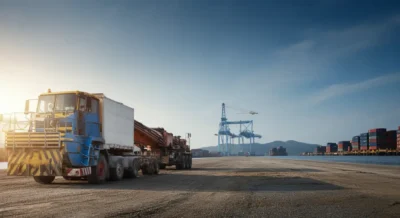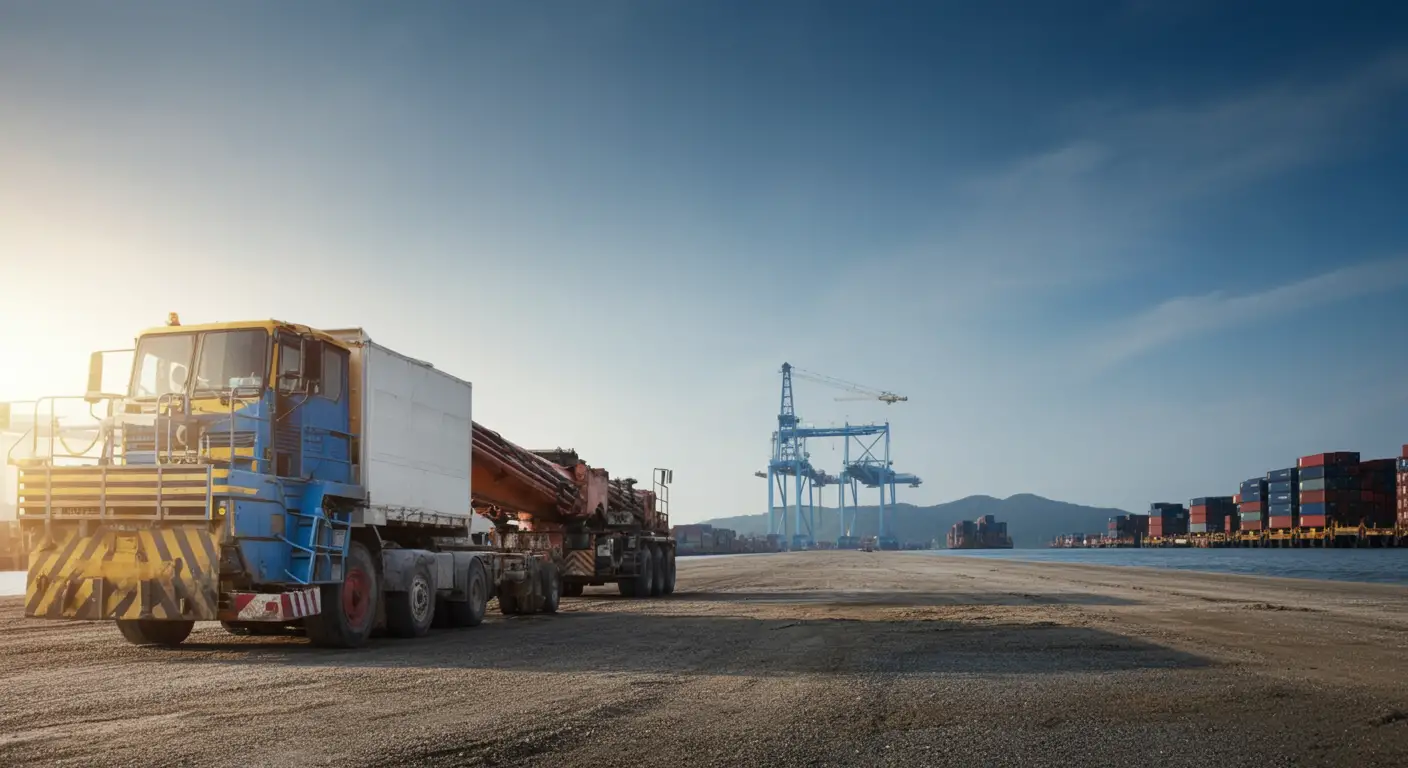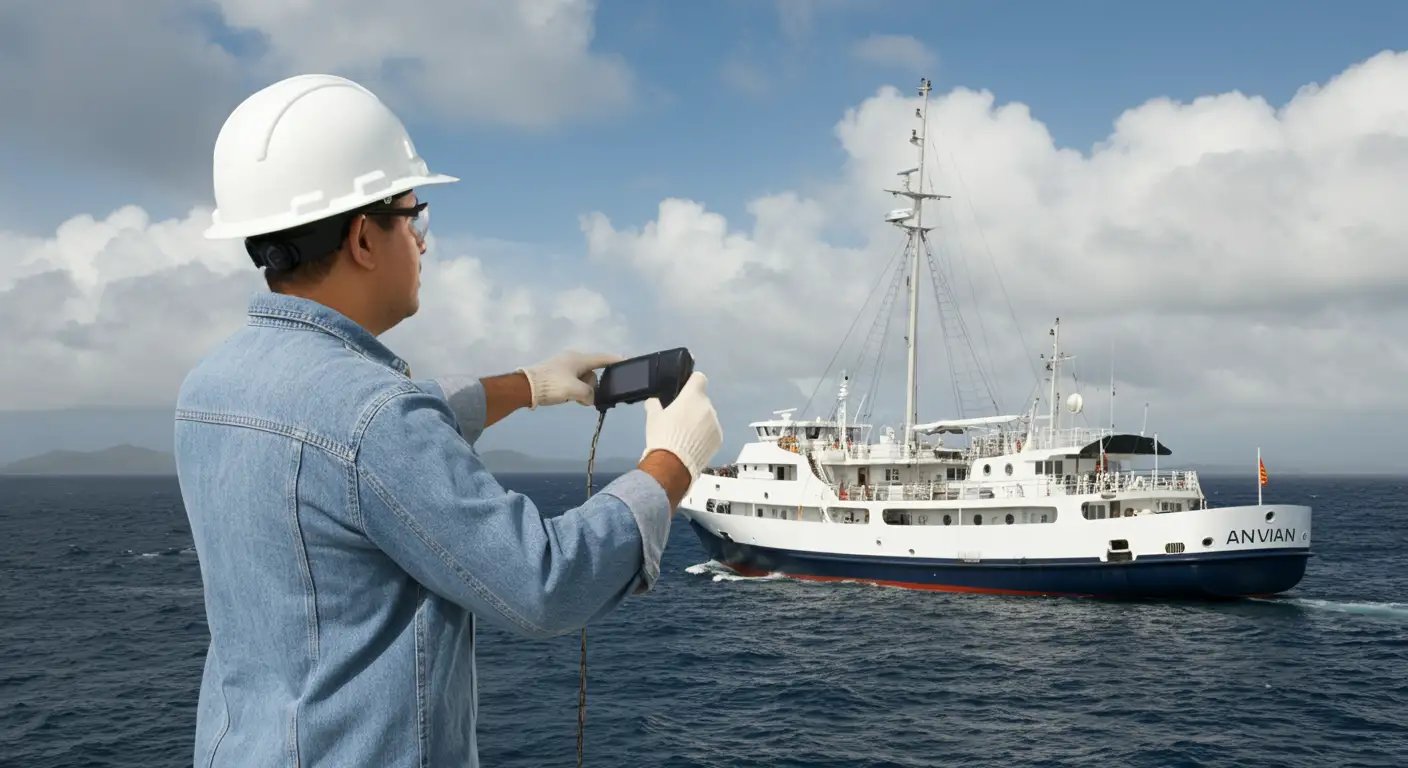Port Automation: Streamlining Operations & Boosting Efficiency
Welcome to Techove UK. We can write our amazing content experiment about Port Automation: How Marine Tech is Transforming Terminal Operations with powerful details and information.
The world of shipping and ports is undergoing a revolution, one that’s powered by cutting-edge technology and innovative solutions. This transformation is called port automation, and it’s changing the way goods move across the globe. From bustling ports like Rotterdam in Europe to Yangshan Port in China, automation technology makes terminal operations faster, safer, and more efficient.
But what exactly is port automation? How does it work? And why does it matter so much for the future of global trade? Let’s dive into this fascinating topic step by step.
What Is Port Automation?
At its core, port automation refers to using advanced technologies to streamline operations at marine terminals. These technologies include robotics, Artificial Intelligence (AI), Automated Guided Vehicles (AGVs), and smart systems that reduce human intervention while increasing efficiency. In simple terms, port automation means machines do tasks humans used to do, like moving containers, loading cargo onto ships, or even managing shipment data.
For example:
- At Rotterdam Port, one of the busiest ports in Europe, automated cranes lift containers with precision.
- At Yangshan Port in Shanghai, fully automated systems handle millions of containers yearly without breaking a sweat.
- In Los Angeles’ TraPac terminal, AGVs zip around like worker bees, transporting cargo from one point to another.
These advancements are not just cool—they’re essential for keeping up with the ever-growing demand for global shipping.
Why Is Port Automation Important?
Imagine this: You order a toy online from another country. For that toy to reach you on time, it has to pass through several steps—being packed into a container, loaded onto a ship, transported across oceans, unloaded at a port near you, and finally delivered to your doorstep. Without efficient port operations, this process could take weeks or even months!
Here’s why port automation matters:
- Speed: Automated systems can handle tasks much faster than humans. For instance, an automated crane can unload a container in minutes compared to hours with manual labor.
- Safety: Ports are busy places with heavy machinery and towering stacks of containers. Automation reduces accidents by minimizing human involvement in dangerous tasks.
- Cost Efficiency: While setting up automated systems can be expensive initially, they save money in the long run by reducing labor costs and improving productivity.
- Environmental Benefits: Automated systems often use electric power instead of diesel engines, reducing greenhouse gas emissions.
In short, port automation isn’t just about making things easier—it’s about meeting the demands of modern trade while protecting workers and the planet.
👉Related Post: Marine Technology vs Marine Engineering: Navigating the Seas of Innovation
Benefits of Port Automation
1. Increased Efficiency
Automation reduces turnaround times significantly:
- At Qingdao Port, automated systems cut container processing time by nearly 30%.
- Shanghai Port’s throughput increased from 43 million TEUs in 2019 to over 47 million TEUs by 2024.
2. Enhanced Safety
By replacing manual labor with machines for hazardous tasks:
- Heavy machinery accidents dropped by over 60% at fully automated terminals.
3. Environmental Sustainability
Automation helps reduce carbon emissions:
- Rotterdam reduced CO2 emissions by optimizing energy usage through smart grids.
4. Cost Savings
While initial investments are high:
- Ports save millions annually through reduced labor costs and improved efficiency.
How Does Port Automation Work?
Port automation relies on several key technologies working together like pieces of a puzzle:
1. Automated Guided Vehicles (AGVs)
AGVs are self-driving vehicles designed to transport containers within terminals. They follow pre-programmed routes using sensors and GPS technology.
- Example: At Qingdao Port in China, AGVs operate 24/7 without needing breaks or rest.
2. Robotic Cranes
These cranes use AI algorithms to lift and place containers with pinpoint accuracy.
- Example: The fully automated cranes at Yangshan Port can handle over 40 million TEUs (twenty-foot equivalent units) annually!
3. Smart Cargo Handling Systems
These systems track every container’s location using RFID tags or IoT devices.
- Example: At Shanghai Port, the busiest port globally, smart cargo handling ensures no container is lost in the shuffle.
4. Data Analytics & AI
Automation technology uses big data analytics to predict delays or optimize routes for ships arriving at terminals.
- Example: Ports like Rotterdam use AI-powered software to manage vessel schedules efficiently.
By seamlessly combining these technologies, ports can achieve what was once thought impossible: handling massive volumes of cargo quickly and accurately.
How Marine Tech is Transforming Terminal Operations
1. Automated Guided Vehicles (AGVs)
One of the most visible aspects of port automation is using AGVs, driverless vehicles designed to transport containers within terminals. At ports like Rotterdam and Shanghai, AGVs navigate using sensors and GPS technology to ensure smooth operations.
- In 2020 alone, AGVs handled over 30% more containers than traditional methods.
- By 2024, their usage increased by 45%, reducing operational costs significantly.
2. Smart Cranes
Gone are the days when cranes relied solely on human operators. Modern cranes equipped with AI can autonomously load and unload cargo with pinpoint accuracy.
- For instance, at Yangshan Port—the world’s largest automated terminal, smart cranes process up to 40 containers per hour.
- These cranes also minimize accidents by eliminating human involvement in dangerous tasks.
3. Digital Twins
A digital twin is a virtual replica of physical assets used for simulation and optimization. Ports like Rotterdam use digital twins to predict bottlenecks and optimize workflows before they occur.
4. Blockchain Technology
Blockchain ensures secure data sharing among stakeholders involved in shipping processes. This technology has been instrumental in reducing paperwork delays at major ports like Los Angeles.
Famous Examples of Fully Automated Ports
Let’s take a closer look at some shining stars in the world of port automation:
1. Rotterdam Port (Netherlands)
Known as Europe’s largest seaport, Rotterdam has embraced full-scale automation with its Maasvlakte II terminal:
- AGVs transport containers autonomously.
- Robotic cranes operate day and night without human intervention.
- Advanced software optimizes ship berthing schedules.
2. Yangshan Deep-Water Port (China)
Located near Shanghai, Yangshan is part of China’s ambitious Belt and Road Initiative:
- It features fully automated loading/unloading systems.
- Over 130 robotic cranes work tirelessly here!
3. Qingdao Port (China)
This Chinese port boasts one of the most advanced AGV fleets globally:
- Each vehicle communicates wirelessly with others for smooth coordination.
4. TraPac Terminal (Los Angeles)
As one of North America’s first semi-automated terminals:
- TraPac uses AGVs alongside human operators for hybrid efficiency.
These examples show how regions leverage marine tech innovations tailored to their unique needs.
Challenges Facing Port Automation
While exciting advancements are happening worldwide thanks to port automation technology—it’s not all smooth sailing! Here are some challenges:
- High Initial Costs: Setting up fully automated terminals requires significant investment upfront—sometimes billions!
- Resistance from Workers: Labor unions often oppose automation due to fears about job losses caused by replacing humans with machines.
- Cybersecurity Risks: As ports become more digitalized, they become vulnerable targets for hackers who could disrupt operations entirely during cyberattacks!
- Technical Limitations: Not all ports have access yet due to geographic constraints or lack of funding for necessary upgrades, the infrastructure required for a full-scale implementation of new technologies!
Despite these hurdles, it’s clear that the benefits outweigh the drawbacks in the long term, ensuring the continued growth of global trade networks reliant upon an efficient functioning maritime industry and its overall success.
Case Study: Shanghai Yangshan Deep Water Port
The Shanghai Yangshan Deep Water Port in China is the largest automated terminal in the world. Let’s look at how technology has transformed its operations:
| Feature | Before Automation | After Automation |
|---|---|---|
| Cranes | Operated manually by workers | Fully automated with remote control |
| Container Movement | Trucks driven by humans | Self-driving vehicles |
| Efficiency | Slower loading/unloading times | 30% faster operations |
| Safety | Risk of accidents for workers | Reduced human involvement |
| Environmental Impact | Higher fuel consumption | Lower emissions due to efficiency |
This port uses advanced software to plan container storage and movement and collects data in real time to ensure smooth operations.
FAQs About “Port Automation: How Marine Tech is Transforming Terminal Operations”
Q1: What is port automation?
Port automation refers to using advanced technologies such as robotics and AI to streamline terminal operations, such as cargo handling and container movement, efficiently while reducing human intervention.
Q2: Which are some examples of fully automated ports?
Fully automated ports include:
- Yangshan Port (China)
- Rotterdam (Netherlands)
- Qingdao Port (China)
- TraPac Terminal (Los Angeles)
Q3: What are Automated Guided Vehicles (AGVs)?
AGVs are driverless vehicles used within terminals to transport containers efficiently using GPS navigation systems.
Q4: What benefits does port automation offer?
Port automation offers benefits such as increased efficiency (+30%), enhanced safety (-60% accidents), environmental sustainability (-CO2 emissions), and cost savings ($millions annually).
Q5: What challenges does port automation face?
Challenges include high initial costs (~$500M/terminal), resistance from labor unions fearing job losses (~20% strikes globally), cybersecurity risks (+25% attacks/year), and integration issues with legacy infrastructure (~40%).
Statistics on “Port Automation” Growth
| Year | Global Trade Volume Growth (%) | Automated Terminals (%) | Reduction in Accidents (%) |
|---|---|---|---|
| 2020 | +5 | ~15 | -40 |
| 2022 | +7 | ~25 | -50 |
| 2024 | +10 | ~35 | -60 |
(Source: Industry Reports & Expert Analysis)
Conclusion: Port Automation
In conclusion, “Port Automation: How Marine Tech is Transforming Terminal Operations“ represents technological progress and humanity’s ability to adapt and innovate amidst growing challenges in global trade logistics.
From AGVs zipping across docks at Rotterdam to Yangshan’s towering smart cranes effortlessly lifting tons, marine tech holds immense potential! While hurdles remain like labor disputes or cybersecurity risks, the future shines bright when we embrace change responsibly!
So next time you see massive ships docking somewhere far away, remember behind-the-scenes lies an orchestra powered entirely via cutting-edge marine tech ensuring everything flows seamlessly! 🌊





